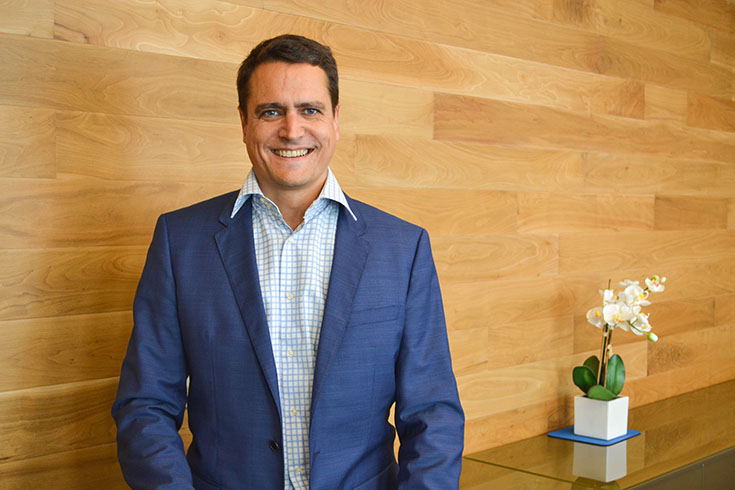This post was contributed by Thomas Delloye, Zilliant director of business solutions consulting (BSC) in France. Prior to Zilliant, Thomas directed global client and competitive pricing at Dell EMEA.
In B2C, it’s extremely easy to access competitive pricing information; prices are usually published online. For consumer companies, it’s getting simpler to set prices that are competitive and market-aligned by leveraging dynamic price tracking systems or data mining software.

By contrast, in B2B, customers don’t receive uniform pricing. Prices can be customer-specific, or deal-specific, changing based on the mix of products, transportation costs, associated services, and much more. Even when a product is considered as “utility” or “commoditized,” the price is usually negotiated, despite efforts to create pricing matrix leveraging various dimensions.
The final price paid is often only known by two parties: the company and the customer. This information is usually a well-kept secret. In very rare occasions, the prices are anonymized and made available as industry benchmark, with some aggregation of information. As such, B2B companies spend substantial amounts of money and resources to collect, analyze, and understand any piece of competitor price information that can be accessed.
Typically, a marketing or pricing team will spend exorbitant resources analyzing this vague information, approximating competitor prices and attempting to set prices for sellers to quote to customers. Before they are comfortable quoting customers, sellers want to know that the pricing research was relevant and comprehensive. Often their questions aren’t satisfied, or they can’t close deals with these new prices. Over time, trust erodes between the sales team and the marketing or pricing team.
Competitive Signals in the Noise
Instead of wasting time and resources for such a weak result, leading B2B companies are adopting an easier, more reliable resource to discover the fair market price for each selling circumstance.
The resource? A company’s own in-house, existing transactional data. Locked within this data source is a powerful signal about competitor prices.
If one product has successfully been sold 10, 20, or 50 times under specific conditions (which include the presence of competitive alternatives), logic follows that the prices at which the product sold can’t be far from the fair market price relative to those alternatives. It’s indicative that customers consider those prices to be competitive enough to purchase, given the relative price-to-value ratio of the alternatives. Emerging AI pricing software methods prove a very efficient way to extract these powerful signals while avoiding the extensive time and resource expenditures of the past.
Based on my experience working with industrial B2B companies, the cost of implementing this new approach is five to 10 times less than the cost of collecting, processing and analyzing competitive pricing. As a huge bonus, the set of customer-product combinations for which reliable price points can be generated is much broader, and more current, than what’s possible with meager, months-old competitive data sets. Continuously analyzing the data with AI-enriched data analytic tools reveals what the fair market price was, but also, can reveal what the prices should be now and in the future. Sellers also trust prices generated this way — they are based on the prices they’ve won with in past similar situations, and the AI engine “thinks” like smart sellers do. This is done thanks to the micro-segmentation; clustering all transactions to leverage as many dimensions as necessary to be accurate in choosing a price. For example: geography, product, customer type, customer size, order size, contractual conditions, payment terms, etc.
While manual analysis of competitor price data served B2B companies well in the past, today’s computing power is unbelievably fast and available data sets grow larger each day. Instead of expending the resources of smart and talented people approximating competitor data for a small part of your business, apply AI to mine these signals for all your business. By doing so, human capital is freed up, enabling internal pricers and marketers to develop more complex pricing strategies, and empowering sellers to achieve better results through smart and competitively-aligned price recommendations.
About the Author
As director of business solutions consulting, Thomas’ primary responsibility is to ensure Zilliant brings value to its customer and prospects. Thomas works with leading B2B companies to identify and quantify uncaptured profit and revenue that exists in their businesses today. Additionally, he helps Zilliant customers apply predictive intelligence to their data to achieve profitable growth, increase competitive advantage, reduce business complexity and successfully implement business transformation. Prior to joining Zilliant in 2016, Thomas led the EMEA client pricing team for Dell, and held various roles in competitive analysis, pricing initiative & transformation, omnichannel pricing & bid pricing. Thomas graduated from HEC MBA & ISEN (MSc engineering). He currently resides in Montpellier, France.
